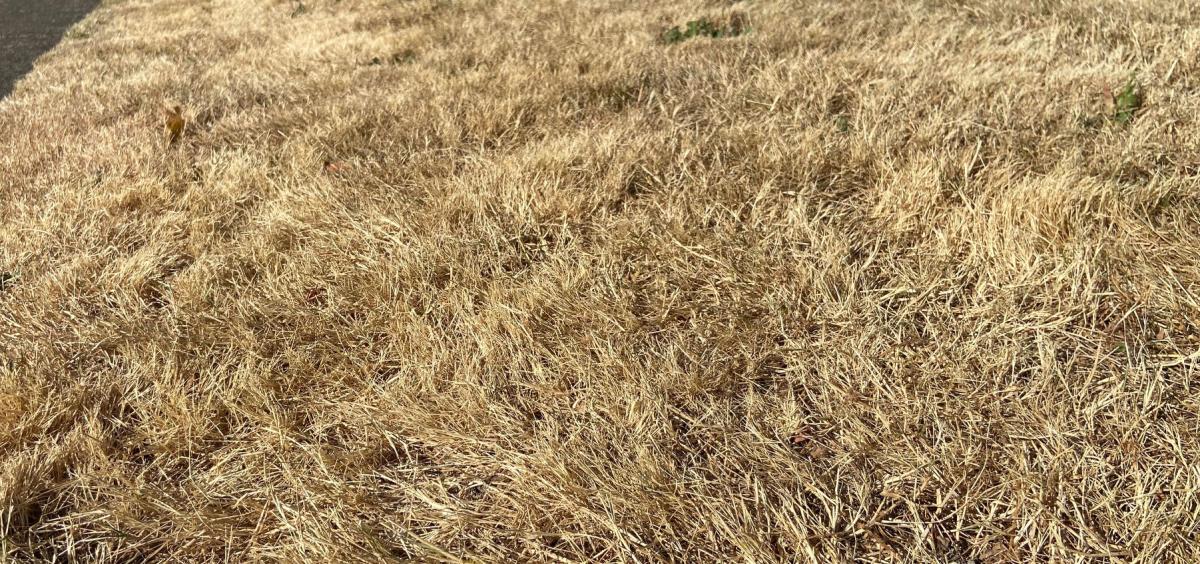
CORVALLIS – Lawns languish in the heat of summer unless showered with the water they require to thrive. But not to worry, the grass isn’t dead.
Come fall when the rains start again, grass greens up quickly, said Alec Kowalewski, turf specialist for Oregon State University’s Extension Service.
While letting your lawn go dormant in summer isn’t a bad thing -- especially with concern about water shortages -- lack of irrigation does allow weeds to gain a foothold, he said. And regular wear and tear can cause compaction within a lawn, which leads to brown or bare spots.
Now is a good time to whip your lawn back into shape, but starting over usually isn’t necessary.
“You should always try renovation before putting in a new lawn because it’s difficult to get a stand of grass established,” Kowalewski said. “So if you have something to begin with, go with renovating.”
What you have to begin with can vary from addressing a few brown spots to a desert of weeds to hardpan soil. Assess your lawn’s level of neediness and proceed with a regular renovation or a no-holds-barred one. Most often, a regular tune up is all that’s needed.
Once you’ve got your lawn established, follow Kowalewski’s three steps to a healthy lawn that will outcompete those pesky weeds: water, fertilize and mow properly.
Water 1 inch a week, but don’t do it all at once.
“If you look at the roots, the majority are in the top 1 inch of the soil,” he said. “The deeper you go the fewer roots there are so watering more than a quarter inch at a time is a waste. So irrigate more frequently with less amounts when it’s not raining.”
Fertilize four times a year. An easy way to remember is to apply on Memorial Day, Fourth of July, Labor Day and Thanksgiving.
When it comes to mowing, never remove more than one-third of the grass at one time. That means if the lawn is 3 inches long, cut only 1 inch. Cutting more than one-third weakens the lawn, leaving it vulnerable to weeds and diseases. For most grasses, 2 inches is about top range a homeowner will tolerate, but higher is even better.
“Increase the height of the grass as tall as you can stand it and mow once a week,” he said. “If you mow it to an inch, it’s horrible to the health of the plant because you’re decreasing rooting depth and stress tolerance. And you’ll have to water more often.”
Mow once a week in spring and fall, and less often during summer and winter months. Instead of bagging up clippings, consider leaving them where they fall. They break down quickly and resupply much-needed nitrogen. The more often you mow, the easier this is to do. Don’t, however, leave clumps of clippings sitting on the lawn.
For more information, watch Kowalewski’s video Integrated Pest Management for Turfgrass. Or check out the following publications: "Practical Lawn Establishment and Renovation," "Practical Lawn Care for Western Oregon," "Retail Lawn Seed Mixtures for Western Oregon and Western Washington" and "Fertilizing Lawns."
Kowalewski’s steps for renovating a lawn:
For regular renovation:
For major renovation, do the above steps and add the following:
About the OSU Extension Service: The Oregon State University Extension Service shares research-based knowledge with people and communities in Oregon’s 36 counties. OSU Extension addresses issues that matter to urban and rural Oregonians. OSU Extension’s partnerships and programs contribute to a healthy, prosperous and sustainable future for Oregon.
Kym Pokorny, 541-737-3380, kym.pokorny@oregonstate.edu
Alec Kowalewski, 541-737-5449, alec.kowalewski@oegonstate.edu
Click photos to see a full-size version. Right click and save image to download.